Food and Drink: Special Occasion Foods
National and Public Holidays
Fête Nationale (Bastille Day)
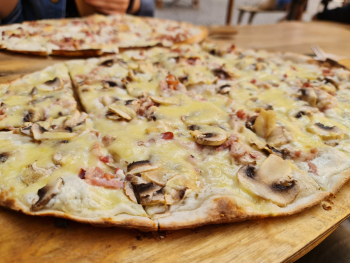
July 14's Bastille Day commemorates the storming of the Bastille prison in 1789, marking the start of the French Revolution. This national day of France is celebrated with parades, fireworks, and public festivities throughout France. Food plays a significant role in the celebrations, often reflecting the diversity of French regional cuisines. Outdoor picnics are common, where various dips, cheeses, breads, meats, and pâté are enjoyed. Grilled meats including lamb sausages called merguez are typically served in a baguette with Dijon mustard. Vichyssoise (potato-leek soup), buckwheat crepes made with ham, cheese, and egg, and the classic tuna niçoise salad also are commonly enjoyed. Tarte flambée, a cross between a flat pizza and a savory tart, is made with a thin sheet of unleavened dough that's spread with crème fraiche (a thick, cultured dairy product with a slightly sour and nutty flavor) and various toppings, with classics including onion, lardons (bacon) and cheese.
Desserts often include tarte aux fruits (fruit tarts), such as plum galette or tarte Tatin, which is essentially an upside down apple tart. A Fraisier cake is a classic French dessert made with sponge cake layered with strawberries and a creamy filling, often with a marizpan top. Strawberries are sliced and arranged around the edges of the cake, which makes a distinct impression on Bastille Day.
Fête du Travail (May Day or Labor Day)
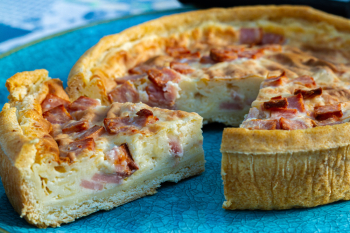
Fête du Travail is also known as Labor Day or May Day and is a celebration of both the country’s workers and spring, with people giving lily-of-the-valley flowers as gifts. Traditional meals often include spring vegetables such as asparagus, peas, radishes, and artichokes, while grilled meats and savory tarts and quiches such as quiche Lorraine—a savory French tart made with eggs, cream, and bacon or ham in a pastry shell—often appear at family gatherings.
Religious and Spiritual Occasions
Noël (Christmas)
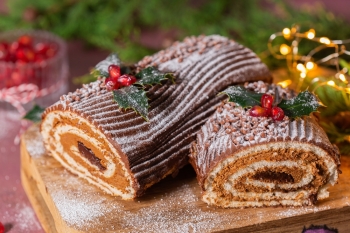
Christmas in France is a deeply traditional celebration marked by festive meals and gatherings with family. Most French people celebrate Christmas on December 24 with a large feast called le réveillon, a long dinner which is enjoyed after midnight mass. The meal often features dishes such as goose, turkey stuffed with chestnuts, foie gras (goose liver pâté), boudin rouge (blood sausage), oysters, and for dessert, the traditional bûche de Noël, a rich, creamy sponge cake shaped like a Yule log.
Pâques (Easter)
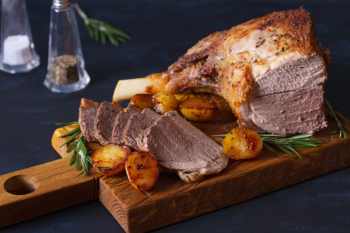
Easter celebrates the resurrection of Christ and is marked by both religious services and family meals. Lamb is the traditional Easter dish in France and the gigot d'agneau (leg of lamb) is often roasted with herbs such as rosemary and served with seasonal vegetables. Among these are white asparagus—often served with creamy Hollandaise sauce made from butter, egg yolks, and lemon juice—with peas and carrots common vegetables that appear either on their own as cooked side dishes or added to salads, soups, or quiches. Deviled eggs also are a popular Easter food.
Easter also includes a variety of sweets, such as chocolates shaped like eggs and rabbits, although the most popular Easter dessert is nid de Pâques, a bundt cake decorated with buttercream strands to resemble a bird’s nest, and filled with chocolate or candy eggs in the center.
Life Milestones and Personal Celebrations
Weddings

French wedding meals are often multi-course affairs that include hors d'oeuvres (small hot or cold appetizers), with seafood such as oysters or scallops common starters. Heavy main dishes such as duck breast, beef burgundy, and coq au vin—chicken braised with wine, mushrooms, and lardons (strips or cubes of fatty bacon or pork fat)—are popular choices, often served with potatoes, seasonal vegetables, and salad. Various fish may also be served as a main course, such as sea bream or perch fillet. A croquembouche, a pyramid of small cream puffs held in place with caramel binding and spun sugar, is a traditional French wedding cake.
Birthdays
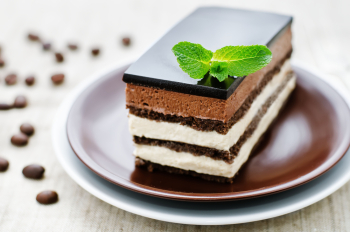
In France, birthdays are celebrated with family and friends. Food during birthday celebrations is often tailored to personal preferences but usually includes a multi-course meal, starting with hors d'oeuvres and leading to a celebratory main dish such as roast chicken, beef, or seafood. The birthday cake, which is often a fruit tart, chocolate mousse cake, or the classic gâteau Opéra, plays a central role.
Cultural and Regional Festivals
Beaujolais Nouveau Day
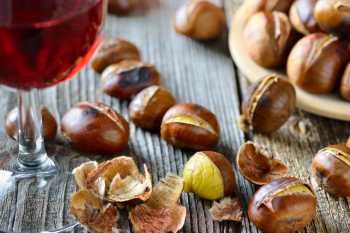
Beaujolais Nouveau Day celebrates the release of the year’s first wine—Beaujolais Nouveau— from the Beaujolais region. The event, historically a Beaujolais regional tradition, is now celebrated throughout France on the third Thursday of November, featuring fireworks, music festivals, and food-related events. Traditional foods served on this day include charcuterie, such as sausages and pâtés, along with cheeses such as camembert, brie, and goat cheese. Simple, rustic foods such as stews made with game meat and roasted red meats are chosen to complement the flavors of Beaujolais Nouveau wine, which is meant to be consumed young and is known for its fresh, fruity, and light flavor profile. Many people enjoy hot roasted chestnuts with the wine or quenelles, a fish and bread dumpling.
La Chandeleur (Candlemas)
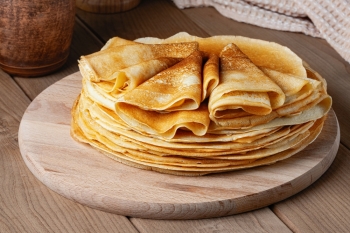
Chandeleur, or Candlemas, is a Christian holiday that commemorates the presentation of Jesus at the Temple of Jerusalem 40 days after his birth, but in France, it's widely celebrated by making and eating crêpes (thin pancakes). Recognized on February 2, the day is also referred to as Crêpe Day in France. Sweet toppings are popular and include jam, applesauce, and powdered sugar. Crêpes are also enjoyed savory, with fillings such as ham and cheese. The round shape and golden color of crêpes are said to symbolize the sun, marking the end of winter, the beginning of spring, and the hope for a prosperous harvest.
Fête de la Musique (Make Music Day or World Music Day)
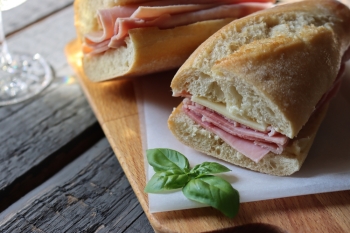
Though primarily focused on celebrating music, Fête de la Musique often involves outdoor gatherings and informal meals. People enjoy the annual festival held on June 21 with musical street performances along with food from local vendors or homemade picnics. Typical foods include sandwiches with French ingredients, such as the sandwich, jambon-beurre, with ham and butter on a baguette. Light fare such as crêpes (thin pancakes), quiches, and pastries are enjoyed as well as international favorites including hot dogs, grilled meat kebabs, and fries (frites).
Fête du Citron (Lemon Festival)
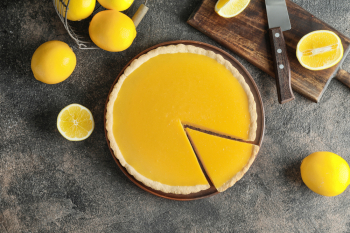
The food at the Fête du Citron highlights the use of citrus fruits, particularly lemons. Sometimes called Carnaval de Menton (Carnival of Menton), Fête du Citron celebrates the annual production of specialty lemons and other citrus fruit in Menton. Running from mid-February to early March, many local and regional specialties feature lemons during the event. From citrus jams and lemon gelato to orange wine, olive oil with lemon, and citrus-flavored dishes, this festival draws hundreds of thousands of people to the French Riviera town. Enjoying a tarte au citron, a classic lemon tart, is one way of savoring the punch of lemon flavored foods.
Copyright © 1993—2025 World Trade Press. All rights reserved.

 France
France